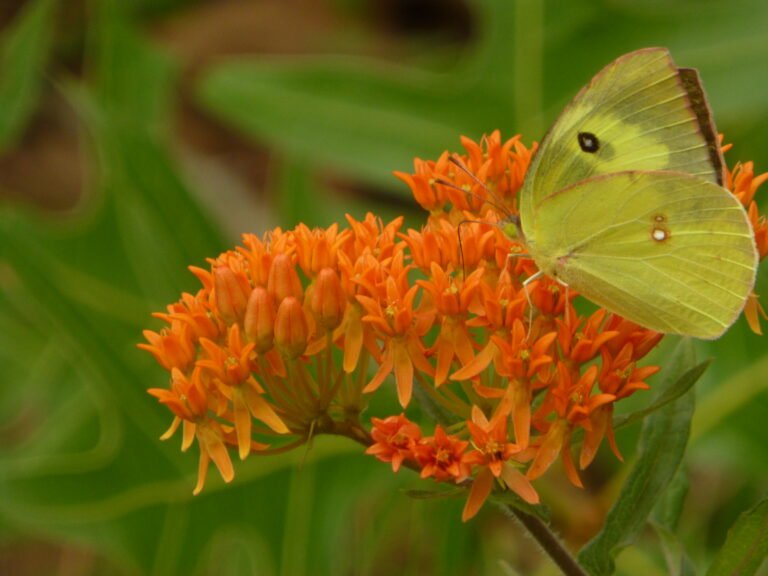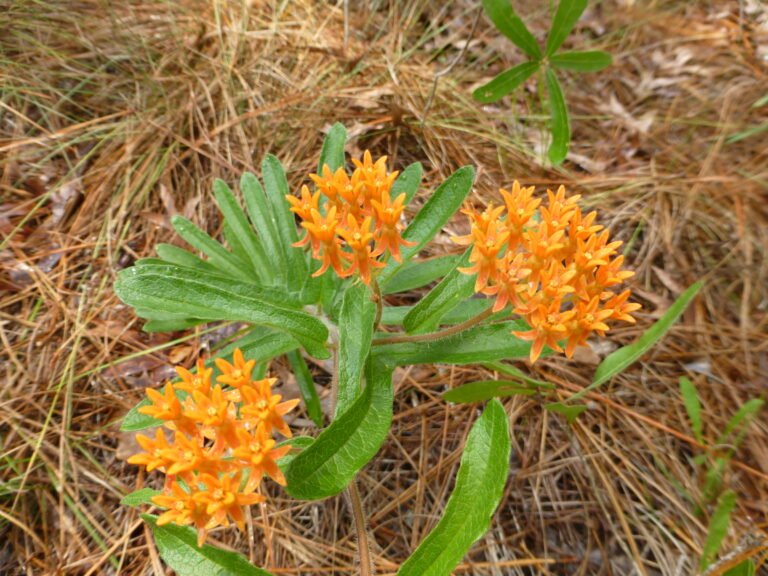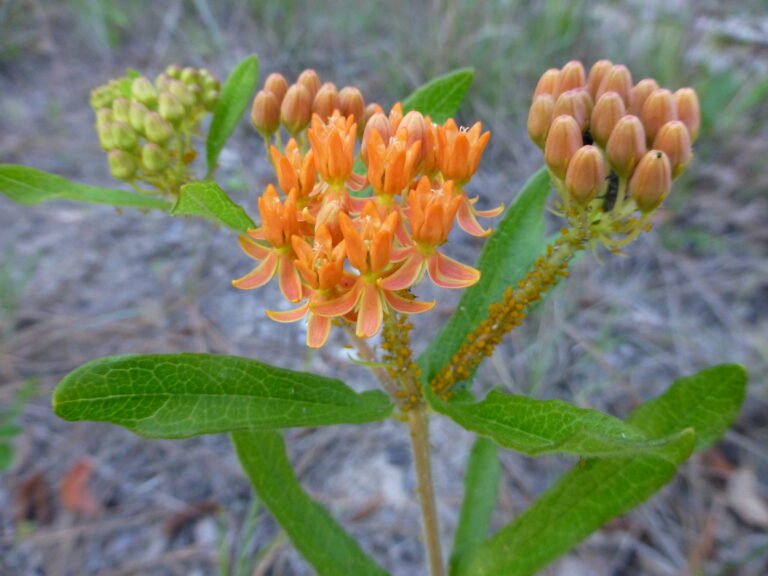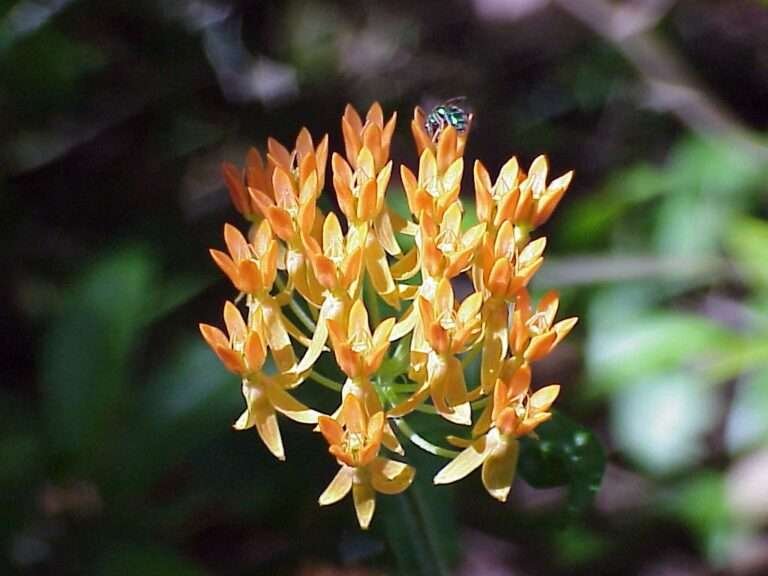
Asclepias tuberosa
(Butterfly Milkweed)

Common Names, Latin Name, and Family
Some of its other common names include butterfly weed, chigger flower, orange milkweed, and pleurisy root.
Its Latin name is Asclepias tuberosa.
It is in the Apocynaceae, or dogbane, family.
Form
Butterfly milkweed is a a perennial wildflower that grows to a height of around three feet.
It generally grows upright, but may fall over and grow along the ground.
Leaves
The leaves are alternate and can be linear, oblanceolate or arrowhead-shaped in shape. The margins are entire. Some may have short stems, but most are sessile. The leaves and stems are hairy.

Flowers
The bright orange flowers appear in early summer and fall.

Habitat
Butterfly milkweed grows in pinelands, sandhills, sunny open forests, dry fields and roadsides.
Native Range
It is found naturally occurring in almost every county in Florida.
Butterfly milkweed is native to the following states: AL, AR, AZ, CA, CO, CT, DC, DE, FL, GA, IA, IL, IN, KS, KY, LA, MA, MD, ME, MI, MN, MO, MS, NC, NE, NH, NJ, NM, NY, OH, OK, PA, RI, SC, SD, TN, TX, UT, VA, VT, WI, and WV.
Landscape Use
In the home landscape it grows in full sun to high shifting shade with average to dry, sandy soil.
Keep watered until the plant becomes established. Once established they are drought tolerant and survive on natural rainfall.
Wildlife Uses
The flowers are a source of nectar for many insects.
The foliage is a host plant for the monarch, soldier and queen butterflies.

Propagation
Can be grown from seed. The seeds need cold stratification for several months in order to germinate. They also need light to germinate so when starting them do not cover them with soil but wait until the seedlings begin to grow and gently place soil around the base of each.
They do not transplant well and generally do not survive the attempt.
I have these seeds for sale at my Ebay Store. They are already cold stratified and ready to plant.
Check out my article about every native milkweed in Florida here!
It has every native species and a range map for each one.